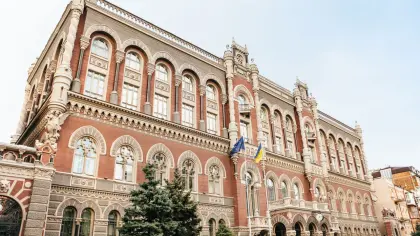The National Bank of Ukraine (NBU) has recently updated its economic forecasts – and the results are strikingly more optimistic than expected. According to the NBU, inflation is now projected to be less than 15 percent, and GDP growth is expected to reach 2 percent.
JOIN US ON TELEGRAM
Follow our coverage of the war on the @Kyivpost_official.
This shift towards positivity is in line with most other analysts, apart from the International Monetary Fund (IMF), which continues to take a more negative outlook. However, this may be due to the fund’s bureaucratic nature and its tendency to be slow to adjust its estimates.
Despite concerns over Russian shelling and apocalyptic predictions for the spring, Ukraine has experienced a surprisingly sound economy through the winter. The stability of the hryvnia remains strong, with the exchange rate serving as a marker of stability and positive expectations.
Additionally, the NBU’s reserves have reached a record level of $36 billion, the highest in ten years. This puts Ukraine within striking distance of the historical maximum of reserves, a target that seemed unattainable just a few years ago.
Despite the ongoing conflict, the exchange rate is expected to remain fixed, and it is unlikely that the National Bank will introduce any level of currency liberalization. Furthermore, the official exchange rate is not significantly different from the black market rate, a situation that is unusual given the circumstances.

‘Ukraine Doing Everything to Ensure 2025 Becomes a Year of Lasting Peace’ – Ukraine at War Update for Dec. 25
In other countries, fixed exchange rates have often led to significant discrepancies between the official and unofficial rates, but Ukraine has managed to maintain relative stability in this regard.
This success can be attributed to a combination of factors, including Ukrainian air defense, Western aid, and the flexibility of Ukrainian business. Even in the face of threats of blackouts and apocalyptic forecasts, 24 new restaurants opened in Kyiv in April alone, a testament to the resilience of Ukrainian entrepreneurs.
This is just one example of the many positive trends emerging in the economy, from returning refugees to the increasing traffic congestion on city streets.
This optimism is reflected in both business and consumer surveys, as well as in real estate prices in cities far from the front line. Western aid has played a crucial role in this success, supporting small and medium-sized businesses and ensuring the stability of social spending.
The long-term stability of this aid is key to the future of the Ukrainian economy, and the tough stance of the IMF has helped to ensure this support. With the G7 countries committed to maintaining financial stability in Ukraine for the next four years, there is hope for continued progress despite the ongoing conflict.
Despite the challenges faced by Ukraine, this spring has brought unexpected hope and progress. While there is still much work to be done, the resilience and adaptability of the Ukrainian people and economy offer cause for optimism.
The views expressed in this opinion article are the author’s and not necessarily those of Kyiv Post.
You can also highlight the text and press Ctrl + Enter






